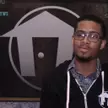With Prince of Persia: The Sands of Time Remake likely still far off from release, it was fairly surprising last year when Ubisoft announced another game in the series. Prince of Persia: The Lost Crown is a side-scrolling metroidvania that takes the series back to its platforming roots. With a fresh story and unique gameplay structure, The Lost Crown breathes new life into the dormant franchise.
The Crown Jewel

Source: Ubisoft
In Prince of Persia: The Lost Crown, you step into the shoes of Sargon, the youngest of seven warriors that protect the kingdom of Persia. When the queen’s son is kidnapped, you’re sent on a journey to figure out who took him and bring him home.
As The Lost Crown’s roughly 25-hour story unravels, you’ll find layers of reveals, twists, and fascinating revelations. I loved that while the story setup is rather straightforward, The Lost Crown dives deep into the series’ lore, with interesting discoveries about Persia and the gods. Mount Qaf serves as the primary setting for the game, and is one of my favorites in a metroidvania. It’s a map that rewards exploration through its secret areas, loot, and unique characters.
This exploration is enhanced by a clever quality-of-life feature that lets you take a snapshot of an environment and pin it to your map. That way, you can quickly be reminded of why you marked an area on the map in the first place. Whether it’s to retrieve a chest you couldn’t reach before or explore a secret passageway you previously discovered, The Lost Crown makes it easy to retrace your steps and visit old areas.
During the journey to save the prince, Sargon will stumble across other characters that need his help. The side quests in Prince of Persia: The Lost Crown feature stories unrelated to the main narrative, and reward you with gear that can further strengthen Sargon. Narratively, I found the side quests to be a bit hit or mess, but they’re a solid option when stuck on a boss you can’t quite get past.
A surge of power

Source: Ubisoft
As an action-platformer, The Lost Crown can feel a bit button-mashy when you first start out, as a cycle of generic three-hit combos is enough to take out most low-level enemies. As the difficulty ramps up and the adversaries become more sophisticated, the game reveals the deep layers of its combat system. There are a variety of moves in Sargon’s arsenal that can be chained together to form unique combos both on the ground and in the air, each tailored to different enemy types.
The same is true of the game’s enemies and bosses. Each enemy type has a distinct weapon and combat style, so attempting to tackle one with the same approach you had for a different enemy type is a recipe for disaster. Instead, you’re rewarded for patience, studying an enemy’s behavior and patterns, and using it to your advantage. This is especially true for bosses, as The Lost Crown presents some thoroughly challenging boss fights that put everything you know about combat to the test.
There’s a parry system that allows Sargon to stagger enemies and send arrows flying back at archers. Figuring out the timing window can be a bit tough at first, but deflecting enemy attacks (especially bosses) is one of the most satisfying feelings in the game. Some attacks are a bit too strong to be parried and will instead require you to dodge them entirely. The game differentiates between the two with yellow and red auras around an enemy when they begin their attack animation.
Combat takes yet another leap when you unlock Athra Surges and Time Powers. These abilities are unlocked as you progress through the story and provide special attacks for Sargon to unleash in combat, as well as some handy utility for exploration.
Coming around the mountain

Source: Ubisoft
From an artistic perspective, Ubisoft Montpellier takes the 2D side-scrolling format and runs with it. From the war-torn battlefield of the prologue to the mystical regions of Mount Qaf, every scene in The Lost Crown is downright beautiful. The art style is warm and storybook-esque, providing a funny juxtaposition to some brutally challenging combat sections.
The environments take center stage when solving puzzles, which are littered throughout Prince of Persia: The Lost Crown. Some puzzles require the manipulation of your environment (pulling levers, spinning gears), while others will require you to unlock and use some of Sargon’s special abilities. I quite enjoyed the platforming segments, and wish more puzzles had incorporated that element more.
All hail the prince

Source: Ubisoft
Prince of Persia: The Lost Crown shows that this long-running franchise still has plenty of life left in it. The main narrative is sharp, with interesting twists and reveals about the universe at large. It’s only surpassed by the combat, which challenged me in all the right ways. The future of Prince of Persia may be uncertain, but Ubisoft just gave itself one hell of a blueprint with The Lost Crown.
This review is based on a PC code provided by the publisher. Prince of Persia: The Lost Crown releases on January 18, 2024, for PS5, PS4, Xbox Series X/S, Xbox One, and Nintendo Switch.
Prince of Persia: The Lost Crown
- Story is sharp and intriguing
- Combat is deeply challenging and satisfying
- Stunning visual art style
- Solid puzzles
- Side quests are hit or miss
-
Donovan Erskine posted a new article, Prince of Persia: The Lost Crown review: Becoming immortal
-


